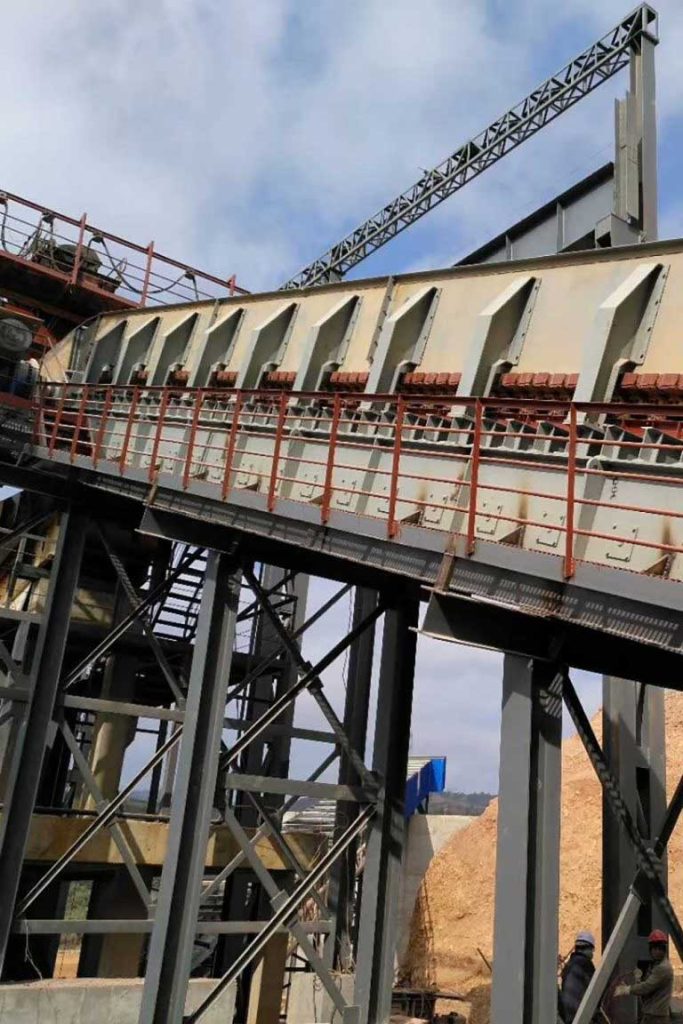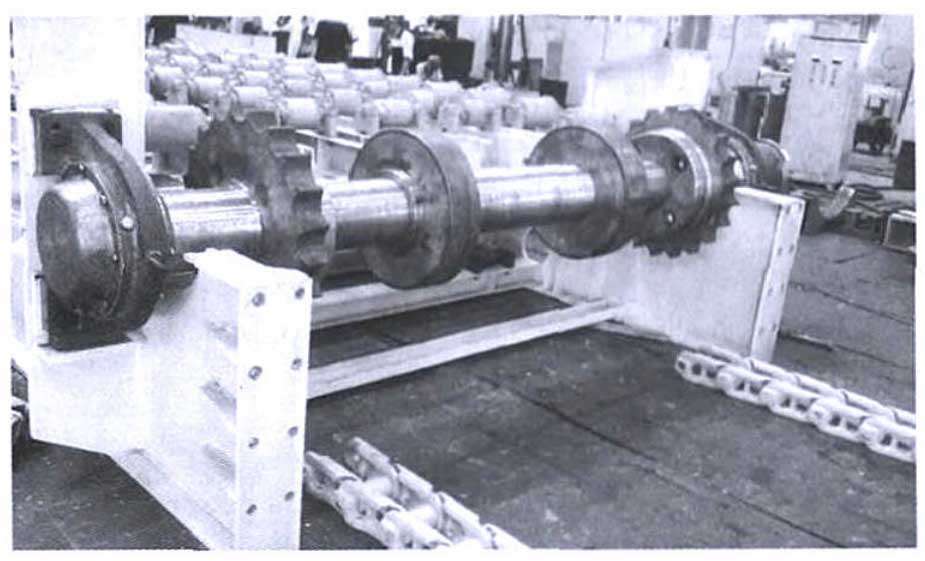An apron feeder and a chain conveyor are both types of heavy-duty conveyor systems used to transport large and heavy materials from one location to another. While they share some similarities, there are also several key differences between the two. In this article, we will explore the main differences between apron feeders and chain conveyors.
Design
One of the main differences between apron feeders and chain conveyors is their design. Apron feeders are designed with overlapping steel plates, also known as “aprons,” that are mounted on a chain-driven conveyor. The aprons are typically made from steel and are designed to withstand heavy loads and abrasive materials. The chain is driven by a motor, which moves the aprons in a continuous loop.

Chain conveyors, on the other hand, are designed with a continuous chain that is driven by a motor. The chain is typically made from steel and is designed to withstand heavy loads and abrasive materials. The chain runs on a track or series of rollers, which guides the chain through the conveyor system.
Material Transported
Another key difference between apron feeders and chain conveyors is the type of material they are designed to transport. Apron feeders are designed to transport large and heavy materials, such as coal, ore, and limestone. They are commonly used in industries such as mining, cement, and quarrying.
Chain conveyors, on the other hand, are designed to transport a variety of materials, including packaged goods, bulk materials, and even people. They are commonly used in industries such as manufacturing, logistics, and transportation.
Speed
The speed at which apron feeders and chain conveyors operate is also different. Apron feeders typically operate at a slower speed than chain conveyors. This is because apron feeders are designed to transport heavy materials, and a slower speed helps to prevent damage to the conveyor system and the materials being transported.
Chain conveyors, on the other hand, can operate at a much faster speed than apron feeders. This is because chain conveyors are designed to transport a variety of materials, including lighter and less abrasive materials.
Capacity
Another key difference between apron feeders and chain conveyors is their capacity. Apron feeders typically have a higher capacity than chain conveyors. This is because apron feeders are designed to transport large and heavy materials, which require a higher capacity conveyor system.
Chain conveyors, on the other hand, typically have a lower capacity than apron feeders. This is because chain conveyors are designed to transport a variety of materials, including lighter and less abrasive materials, which require a lower capacity conveyor system.
Maintenance
Maintenance requirements for apron feeders and chain conveyors are also different. Apron feeders require more maintenance than chain conveyors. This is because apron feeders have more components, including the aprons, chain, sprockets, and bearings, which require regular inspection and replacement.
Chain conveyors, on the other hand, require less maintenance than apron feeders. This is because chain conveyors have fewer components, which require less inspection and replacement.
Noise
Noise levels generated by apron feeders and chain conveyors are also different. Apron feeders tend to generate more noise than chain conveyors. This is because apron feeders operate at a slower speed and require more power to transport heavy materials, which generates more noise.
Chain conveyors, on the other hand, tend to generate less noise than apron feeders. This is because chain conveyors operate at a higher speed and require less power to transport lighter materials, which generates less noise.
Final Words
In conclusion, apron feeders and chain conveyors are both types of heavy-duty conveyor systems used to transport large and heavy materials from one location to another. While they share some similarities, they also have several key differences in their design, the type of material they transport, speed, capacity, maintenance requirements, and noise levels generated.
Apron feeders are designed with overlapping steel plates that are mounted on a chain-driven conveyor, and they are designed to transport large and heavy materials such as coal, ore, and limestone. They operate at a slower speed than chain conveyors, have a higher capacity, and require more maintenance. They also tend to generate more noise than chain conveyors.
Chain conveyors, on the other hand, are designed with a continuous chain that is driven by a motor, and they are used to transport a variety of materials, including packaged goods, bulk materials, and people. They can operate at a faster speed than apron feeders, have a lower capacity, and require less maintenance. They also tend to generate less noise than apron feeders.
